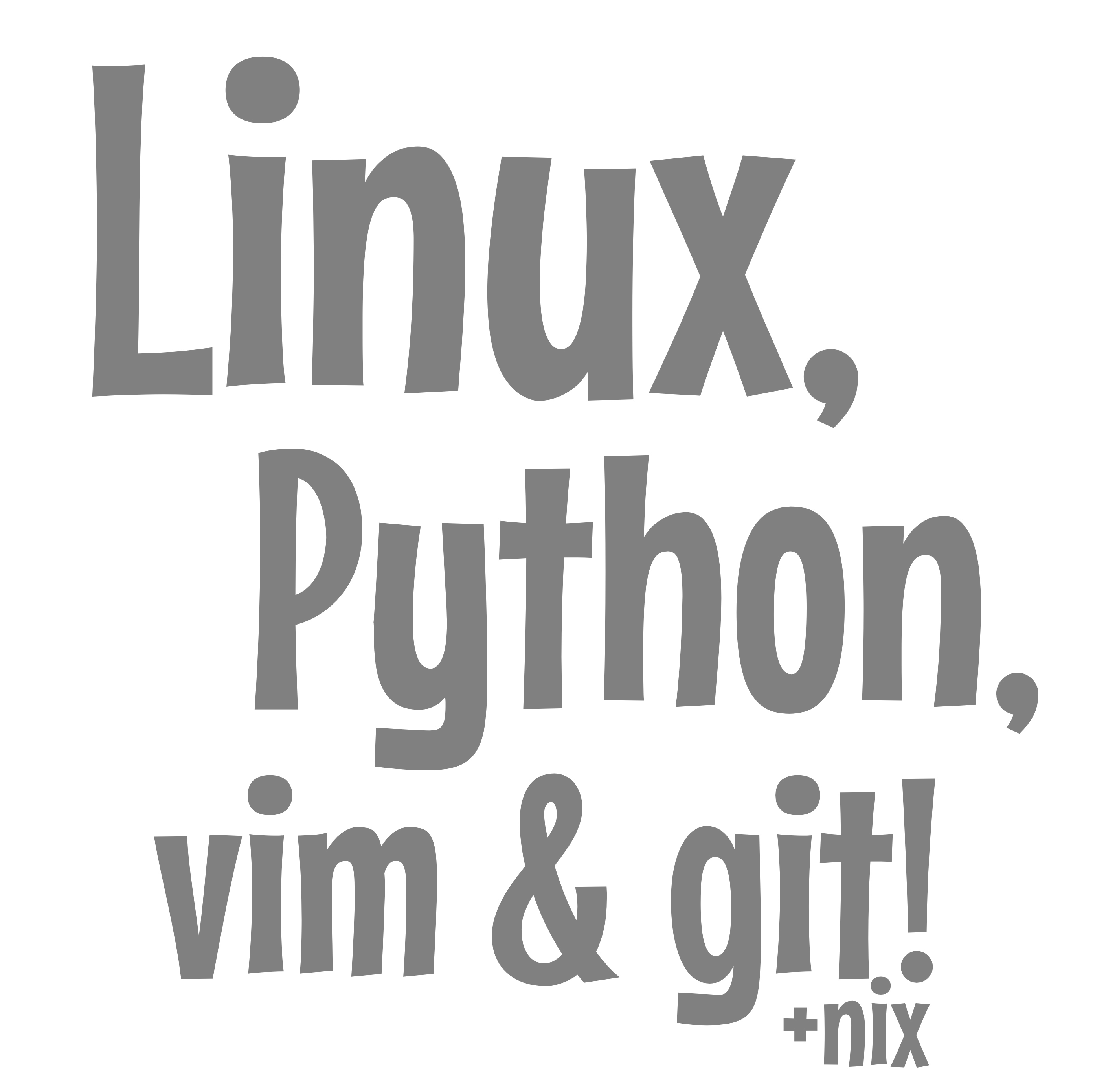Understanding AI Imprecision Getting Started:
The following journal entry delves into the practical challenges and emerging best practices when integrating artificial intelligence, specifically Large Language Models (LLMs), into software development workflows. As AI tools become increasingly common for tasks like drafting code or explaining algorithms, developers are encountering situations where the AI’s inherent “helpfulness” can lead to subtle but critical errors, especially when precise adherence to existing code structures or specific programming interfaces (APIs) is required. This entry explores this “AI coding conundrum,” using a real-world example from a project called “Pipulate” to illustrate how AI might generate plausible-sounding but ultimately incorrect code by favoring common patterns over project-specific requirements.
The core issue discussed is the difference between an AI’s generative capabilities—its strength in creating new and varied content based on patterns—and the need for deterministic, exact modifications often required in coding. It highlights the importance of understanding these AI characteristics and choosing the right approach for different tasks, such as using simple scripts for predictable template changes versus employing carefully crafted instructions (“prompts”) when seeking AI assistance for more complex logic. Ultimately, it’s about learning to effectively collaborate with AI, leveraging its strengths while mitigating its weaknesses to build better software.
The AI Coding Conundrum: When “Helpful” Assistants Need a Shorter Leash
Large Language Models (LLMs) are revolutionizing how we approach coding. They can draft functions, explain complex algorithms, and even scaffold entire applications, acting as tireless, knowledgeable assistants. But as many developers are discovering, there’s a subtle art to wielding this power, especially when precision is paramount. Sometimes, our AI coding partners, in their eagerness to be “helpful,” can introduce subtle errors that undermine the very efficiency they promise. This is the story of that conundrum, and how to navigate it.
The Allure and Ambiguity of Generative AI in Coding
At their core, LLMs are generative marvels. Trained on billions of lines of code and text, they excel at predicting the “next most likely” sequence of tokens. This makes them fantastic for brainstorming, generating novel solutions, and filling in complex logic. However, they aren’t designed to be meticulous search-and-replace tools or unerring executors of precise, diff-like modifications.
The challenge often arises when we ask an LLM to work with existing templates or adhere strictly to the specific API of a custom framework. A request like “copy this template and only change these specific lines” might seem straightforward. Yet, an LLM might interpret this as “focus your changes here, but also ensure the overall output is coherent, well-formed, and perhaps even improved according to the patterns I’ve learned.” This “helpfulness” can manifest as:
- Slight reformatting of surrounding code.
- Minor rephrasing of comments or string literals.
- “Correcting” or “improving” variable or method names to more common patterns, even if those patterns don’t match the specific framework being used.
A Case Study in AI “Creativity”: The Plausible but Incorrect Method
Imagine developing a plugin for a custom software framework. You’ve bootstrapped a minimal workflow and now need to add a new step that involves saving data. You might instruct your AI assistant: “Add a new step that takes user input and saves it using the framework’s pip object.”
In one such real-world scenario within the Pipulate framework, this led to a runtime error: AttributeError: 'Pipulate' object has no attribute 'set_step_data'. Did you mean: 'get_step_data'?
The AI had generated code that called pip.set_step_data(...). This is a perfectly plausible method name, common in many programming paradigms. However, the framework’s actual method for this task was pip.update_step_state(...) (note: retroactively fixed to match more common pattern). The AI, pattern-matching from its vast training data, opted for a common convention over the framework’s specific (and perhaps less common) API. The result? A “colossal failure” that required debugging not the core logic, but a subtle deviation introduced by the AI.
This wasn’t a case of the AI being “wrong” in a general sense; set_data is a valid concept. It was wrong in the specific context of that framework.
Why Strict Templating is a Tough Gig for LLMs
Tasks requiring an LLM to take a large template, understand its structure, identify only a few specific lines or tokens, replace them with exact new values, and ensure nothing else is touched, push against their generative nature.
- Cognitive Load: Maintaining the integrity of a large, unchanged context while surgically altering small parts is demanding.
- Ambiguity of “Only”: An LLM might not interpret “only” as the absolute, iron-clad constraint a human developer would when performing a mechanical edit.
- Holistic Processing: LLMs often process and regenerate text holistically, making it hard to guarantee that untouched parts remain truly untouched at a byte-for-byte level.
Strategies for Success: Balancing AI Assistance with Determinism
The key to navigating this conundrum lies in applying the right tool and the right technique for the job.
-
For Deterministic Boilerplate: Scripts are King When the task is to create a new file from a fixed template with a predefined set of specific, literal replacements (like bootstrapping a new plugin with a unique class name and some configuration constants), a simple script is often the most reliable solution. In the Pipulate project, a Python script (
create_workflow.py) was developed for this exact purpose. It takes command-line arguments for the new names and messages, copies a base template, and performs precise string replacements. This approach guarantees a 100% deterministic and correct baseline, free from generative “drift.” It removes the LLM from a task it’s not optimally designed for. - For LLM-Assisted Coding (Beyond Simple Templating): The Art of the Prompt
When you do want the LLM to help write or modify the logic within these bootstrapped files, effective prompt engineering becomes critical:
- Hyper-Specificity: Be painstakingly clear and unambiguous. Instead of “save the data,” try “call the
update_step_statemethod on thepipobject, passingpipeline_id,step_id, anduser_inputas arguments.” - Decompose Complex Tasks: Break down larger modifications into smaller, manageable sub-tasks for the AI. Guide it step-by-step, just as the “Gemini-to-Claude” dialogues in our development guide illustrated.
- Provide Context and Examples: Show the AI the existing structure, relevant API documentation snippets, or examples of correct usage within the framework.
- Use Explicit Constraints (Positive and Negative): Clearly state what to do and, just as importantly, what not to do. Phrases like “Do not alter any other methods,” “Ensure the existing import statements remain unchanged,” or “The method signature must be exactly…” can help.
- Iterative Refinement: Treat interaction with an LLM as a dialogue. Your first prompt might not yield the perfect result. Analyze the output, refine your prompt, and try again.
- Hyper-Specificity: Be painstakingly clear and unambiguous. Instead of “save the data,” try “call the
- Human Oversight and Framework Knowledge Remain Crucial No matter how advanced the AI, it’s an assistant. Developers must retain oversight and verify AI-generated code, especially when it interacts with specific APIs, relies on framework conventions, or has security implications. A deep understanding of your own framework or the tools you’re working with is irreplaceable for guiding the AI effectively and catching subtle errors.
Broader Lessons Learned
The journey of integrating AI into coding workflows teaches valuable lessons:
- Understand Your Tools: LLMs are not magic. Knowing their generative strengths and their limitations in deterministic tasks is key.
- Choose the Right Tool for the Task: For rigid, repeatable template instantiation, a script often beats an LLM. For brainstorming logic, drafting complex functions, or refactoring, an LLM can be a huge accelerator.
- Precision in Communication: The more precise and constrained your instructions to an LLM, the more likely you are to get a precise and constrained output when that’s what’s needed.
- Embrace Iteration: Both in your code and in your interactions with AI.
- The “Art of Collaboration”: Effectively using AI in development is about learning how to best collaborate with these new kinds of partners, guiding their strengths towards your goals.
LLMs are undeniably transforming software development. By understanding their nature and pairing their generative power with human expertise and deterministic tools where appropriate, we can navigate the “AI coding conundrum” and build better software, faster. The goal isn’t to replace human developers or traditional tools, but to augment them, creating a more powerful and efficient development ecosystem.
AI Analysis
Title/Headline Ideas & Filenames:
- Title: The AI Precision Paradox: When Helpful Code Assistants Go Astray
- Filename:
ai-precision-paradox-helpful-code-assistants-astray.md
- Filename:
- Title: Taming the LLM: Strategies for Deterministic Coding with AI Assistants
- Filename:
taming-llm-deterministic-coding-ai-assistants.md
- Filename:
- Title: Beyond “Good Enough”: Avoiding AI-Induced Errors in Custom Frameworks - A Pipulate Case Study
- Filename:
avoiding-ai-errors-custom-frameworks-pipulate-case-study.md
- Filename:
- Title: The “Colossal Failure” and the Shorter Leash: Guiding AI for Accurate Code Generation
- Filename:
colossal-failure-guiding-ai-accurate-code-generation.md
- Filename:
- Title: Scripts vs. Prompts: Choosing the Right Tool for AI-Powered Development Tasks
- Filename:
scripts-vs-prompts-ai-powered-development.md
- Filename:
Strengths (for Future Book):
- Real-World Case Study: The “Pipulate” example with the
AttributeErrorprovides a concrete, relatable illustration of the problem. - Clear Problem Definition: The article clearly articulates the “conundrum” of AI “helpfulness” versus the need for precision in coding.
- Actionable Strategies: It offers practical solutions, such as using scripts for deterministic tasks and detailed prompt engineering techniques.
- Identifies Key LLM Characteristics: Explains why LLMs struggle with strict templating (cognitive load, ambiguity of “only,” holistic processing).
- First-Hand Insights: The journal format captures immediate, authentic reflections and lessons learned from direct experience.
- Addresses a Timely Topic: The challenges of integrating AI into development are highly relevant to a tech audience.
Weaknesses (for Future Book):
- Jargon and Assumed Knowledge: Terms like “Pipulate,” “Gemini-to-Claude dialogues,” and potentially API/framework specifics might be unclear to a broader audience without more context.
- Narrow Focus: While the specific example is strong, the book might need more diverse examples or a broader discussion of different AI models or coding scenarios.
- Journalistic Style: The “Okay, I’ve distilled…” opening and conversational tone might need refinement for a formal book structure.
- Lack of Broader Context: The article stands alone well but, for a book, would need to be woven into a larger narrative about AI in tech, perhaps connecting to chapters on prompt engineering principles, LLM architecture, or debugging AI-generated code.
- General Audience Claim: While the author mentions aiming for a general audience, the current text is still quite developer-focused; true general appeal would require more foundational explanations.
- Missing Visuals/Diagrams: The concepts (e.g., template modification, AI deviation) could be enhanced with visual aids in a book.
AI Opinion (on Value for Future Book):
This article offers significant value as raw material for a future tech book. Its strength lies in the detailed, firsthand account of a specific, nuanced problem encountered when using LLMs for coding tasks requiring high precision. The “Pipulate” case study serves as an excellent, tangible example of AI’s potential pitfalls and how its “helpfulness” can be a double-edged sword. The outlined strategies for mitigation—differentiating tasks suitable for scripts versus LLMs and emphasizing meticulous prompt engineering—are practical and actionable takeaways for developers.
While its current journal format and project-specific references (e.g., “Pipulate,” “Gemini-to-Claude”) would require contextualization and some reframing for a broader book audience, the core insights into LLM behavior, the importance of human oversight, and the “art of collaboration” with AI are highly relevant and clearly articulated. It’s a strong piece of technical reflection that, with editing and integration into a larger structure, could form a compelling section or chapter addressing the practical realities of AI-assisted development.

